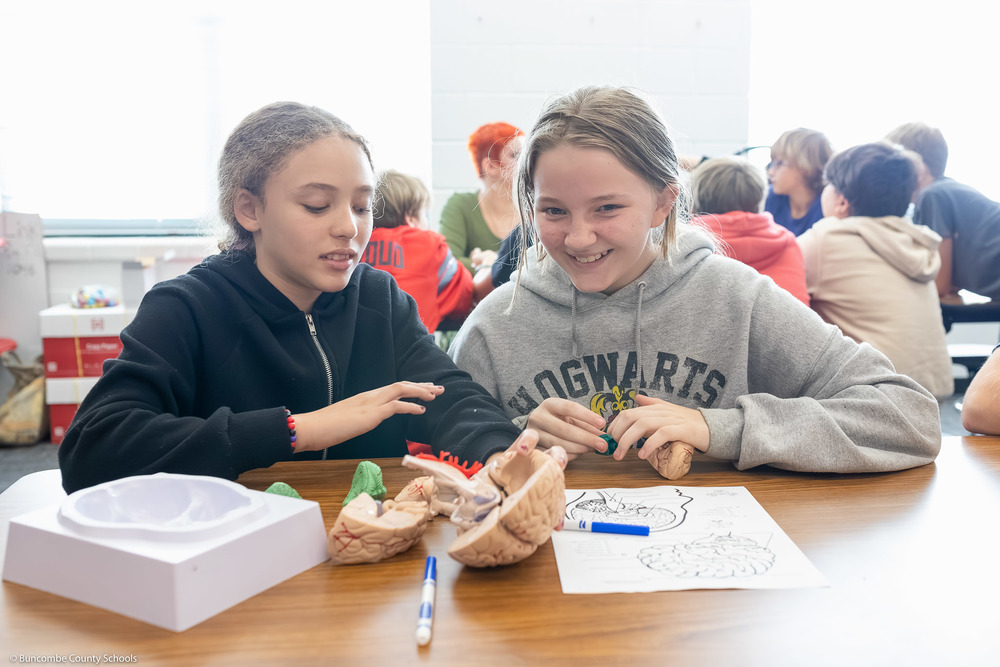🧠🔬🥚 Fifth graders at Black Mountain Elementary School (BMES) got a hands-on- and slightly spooky- science lesson when Warren Wilson College neuroscience students, led by Professor Jen Mozolic, brought real human and animal brains to class.
The interactive visit gave students a memorable introduction to the nervous system, with rotating stations where they examined real human brain hemispheres, including one affected by Alzheimer’s disease; built models of neurons from pipe cleaners; and shook eggs in plastic containers to show how cerebrospinal fluid cushions the brain.
“This is the second year we’ve done this, and it’s such a valuable experience for our students,” said BMES fifth grade teacher Melissa Angel. “We start our Human Body unit soon, and the nervous system is one of the body systems we study. Seeing and touching real brains helps the kids build concrete connections. It’s tangible, realistic, and way more exciting than just reading about it in a book.”
Though brains were present, no zombies showed up. Instead, Dr. Mozolic and her introductory neuroscience students fielded loads of questions from excited kids.
“I was surprised they actually had a real human brain,” said Carsyn, one of the fifth graders. “It smelled really weird in there, and I was a little scared at first. But I learned that your brain is still kind of ‘alive’ for a while after you die, and that’s so strange to think about.”
“I’ve never seen a brain before, like a real one,” added fellow fifth grader Sebastian. “The one that had Alzheimer’s looked different. It had this weird texture, like something was wrong with it. It made me think about how diseases can actually change the way your brain looks.”
Dr. Mozolic said her students engage their own brains during classroom visits like this.
“We use what we call the ‘watch one, do one, teach one’ approach,” she said. “They watch me demonstrate, then they do it in the lab, and finally they teach it here. It’s a full circle of learning that benefits both the college students and the kids.”

